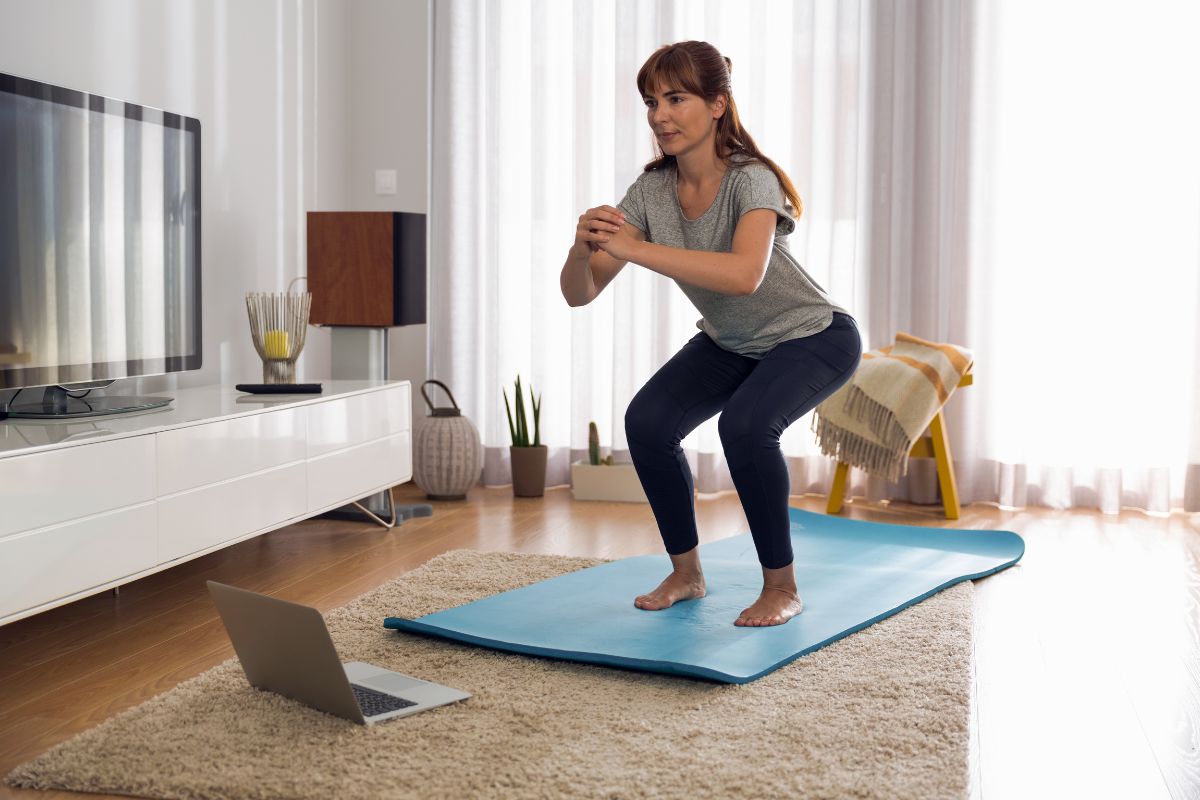Bodyweight Exercises for Travelers Without Equipment

Travel often means irregular schedules and no gym access, but you can still stay fit using just your body. Experts note that you can get a meaningful workout in a hotel room or outdoors using bodyweight moves. These exercises use your body and gravity for resistance (no gear needed) and engage many muscles at once. Staying active on the road also helps combat jet lag, boost energy and mental focus, and reduce travel fatigue. In short, a 10–20 minute session of squats, push-ups, lunges, or yoga can leave you feeling refreshed and strong, even in a cramped hotel space.
Strength-Focused Moves (Upper & Lower Body)
Bodyweight Push-Up. Push-ups are a classic no-equipment exercise that work your chest, shoulders, triceps and core. They can be done on the floor or against a bed/chair (incline or decline) to adjust difficulty. Beginners can also perform push-ups on their knees or do wall push-ups, while advanced travelers might try explosive variations (like plyo push-ups) for extra intensity. Other key strength moves for small spaces include:
-
Air Squats: Stand feet shoulder-width, squat down as if sitting. Squats target the quads, glutes, hamstrings and core. Variations like jump-squats add a cardio burst (builds explosive leg power and raises heart rate).
-
Lunges: Step forward or backward and lower your rear knee. Lunges work quads, glutes, hamstrings and core. Try reverse or walking lunges for variety, or hold a static lunge position (isometric) to increase challenge.
-
Planks: Hold a straight-armed or elbow plank to strengthen the entire midsection. Planks improve core control and shoulder stability. You can modify by dropping to knees or lifting one leg to adjust intensity.
-
Glute Bridges: Lie on your back, knees bent, and lift hips upward. Bridges target glutes, hamstrings and lower back, and can be made harder by lifting one leg or pausing at the top.
-
Triceps Dips: Sit on a bed or chair, palms beside you, and push your hips up and down. This hones the triceps and shoulders. Dips “are an awesome exercise for building and toning your triceps”. You can keep knees bent (easier) or straight (harder).
Each of these moves requires no equipment and minimal space. A balanced routine might pick two leg exercises (squat, lunge), one push (push-up or dip), one pull (see below), and core work (plank/crunches). In general, choose one or two exercises from each fundamental movement category—squat, lunge, hinge, push and pull—and perform 2–4 sets of 8–15 reps each. This “full-body” approach ensures you train all major muscle groups. For example, you could do 15 squats, 10 push-ups, 10 lunges per side, and a 30-second plank, then repeat the circuit 2–3 times.
Cardio & High-Intensity Moves
When space is tight, bodyweight cardio can still get your heart pumping. Quick, dynamic movements turn any corner of a hotel or park into a mini cardio session. Try:
-
Burpees: From standing, squat and kick back to a push-up, then jump up. Burpees hit the whole body and spike your heart rate. They’re “great for full-body cardio” while also working legs, chest and core. If jumping is too intense, step back instead.
-
Jumping Jacks: Classic plyometric warm-up. Stand and jump feet apart with hands overhead. This simple move raises heart rate quickly. You can “high-step” (low-impact) by alternating toe taps if noise or joints are a concern.
-
Mountain Climbers: In a plank stance, drive knees toward chest in a running motion. Mountain climbers build core strength and cardio endurance simultaneously. Aim for steady speed and keep hips low.
-
High Knees/Run-in-Place: Run on the spot lifting knees high. This boosts circulation and stamina without going anywhere. Set a timer for intervals (e.g. 30s on, 15s rest) for extra challenge.
-
Jump Squats: Squat then explosively jump up. These add explosive power for legs and a solid cardio surge. Land softly and descend into the next squat.
-
Step-ups or Stairs (if available): Use a stable chair or a set of stairs. Alternating step-ups raise heart rate and work the legs.
By combining one or more of these moves into a short circuit (e.g. 30 seconds burpees, 30s mountain climbers, 30s jump jacks, repeat), you’ll get both strength and cardiovascular benefits. Even a brief 5–10 minute sprint of such exercises can “improve focus and alertness” when travel fatigue strikes.
Flexibility and Mobility Moves
Travel often means long hours seated, so stretching and mobility work are key to feeling good. A few simple moves done anywhere can ease stiffness:
-
Calf Raises: Stand and slowly rise onto your toes, then lower. Strong, mobile ankles improve balance, and the pumping calf action boosts circulation.
-
Spinal Roll-Down: Stand tall, exhale and slowly roll your upper body down toward the floor (hinging at the hips and letting arms hang). This move stretches the back and hamstrings. Inhale to roll back up one vertebra at a time. (Joy Puleo recommends this to release the spine after prolonged sitting.)
-
Overhead Reach & Side Bends: From standing, sweep arms overhead and lean gently side to side. This opens the shoulders and lengthens the torso.
-
Hip Flexor/Quad Stretch: Kneel on one knee (or lunge) and push hips forward to stretch the front of the hip. Hold 30s each side. A common travel soreness is tight hips from planes or cars, and this relieves it (Nike’s travel workout specifically calls out hip-opening moves like single-leg bridges for this reason).
-
Chest Opener: Stand facing an open doorway, place forearms on the frame, and gently lean forward. This stretches tight chest/shoulder muscles from hunching over devices.
-
Shoulder/Trunk Rotations: While seated or standing, interlace fingers behind head and gently twist side to side. This relieves upper back tension.
Incorporating even 5–10 minutes of stretching or yoga-like flows (e.g. a few rounds of Sun Salutation) each day will improve flexibility and help prevent travel stiffness. Remember: “gentle stretching and mobility” after travel days can ease fatigue.
Sample Travel-Friendly Routines
-
Quick 15-Min Hotel Circuit (All Levels): Do 10–15 reps of each: squats, incline push-ups (hands on bed), reverse lunges (10 per leg), triceps dips (on chair), plank (30s), mountain climbers (30s). Rest 1 minute, then repeat circuit 2–3 times. (Experts recommend running through such hotel-room circuits 1–4 times depending on fitness level.)
-
10-Minute HIIT Tabata: Choose 4 moves (e.g. burpees, jump squats, push-ups, high knees). Perform 20 seconds of work, 10 seconds rest, alternating moves, and repeat each move 4 times (16 intervals total). This 4-minute Tabata sprint can be done back-to-back for 8–12 minutes total. It’s a fast way to get cardio and strength in a short time.
-
Full-Body Stretch & Mobility (6–8 min): After a workout or flight, do 2 rounds of: 10 toe touches, 10 shoulder/arm circles, 10 hip openers (per side), 30s plank, 30s downward dog, 30s child’s pose. This flow improves circulation and flexibility. As one travel guide advises, even short “movement snacks” like this can leave you feeling recharged.
-
Outdoor Active Day: If you’re outdoors, combine a brisk walk or jog (15–30 min) with bodyweight intervals. For example, do walking lunges or squats for 1 block every 5 minutes, or sprint a few strides and then jog. Sightseeing on foot or by bike is also a great way to sneak in cardio without setting aside extra time.
Tips for Staying Consistent on the Road
-
Plan and Prioritize: Decide ahead when and where to exercise. Treat it like any important meeting. “Staying active while traveling is all about planning ahead, packing smart, and making small, intentional choices to move your body”.
-
Set Realistic Goals: Don’t expect an hour at the gym every trip day. Aim for manageable goals (e.g. a 10-minute morning stretch, or 15 squats before showering). Small efforts “keep your momentum going” even on busy days.
-
Be Flexible with Timing: If mornings are hectic, try fitting in movement midday or evening. If you prefer evening wind-downs, do yoga or a quick circuit before bed. “Fitness on the go is all about flexibility; the key is finding what feels good for you and working with your schedule, not against it”.
-
Incorporate Activity into Your Itinerary: Walk or bike to your destinations instead of always taking a cab. Use downtime creatively – do calf raises during TV commercials, or calf/ankle pumps on the plane. Even doing ten bodyweight squats or a plank session while brushing your teeth counts as movement! Short “movement snacks” throughout the day can add up and counteract prolonged sitting.
-
Use Technology Wisely: There are many travel-ready fitness apps and online classes (even video yoga or bodyweight workouts) that require no equipment. These can guide you when you’re unsure what to do. If you have 5–10 minutes, follow a quick routine on your phone. The point is to make exercise easy to start.
-
Stay Accountable: Tell a friend or post about your mini-workouts to stay motivated. Some travelers find online fitness communities or challenges helpful. As one expert notes, sharing progress and “celebrating small wins creates a sense of connection and motivation to keep moving”.
-
Listen to Your Body: Rest is also important. A few easy rest days (or light yoga walks on sightseeing days) won’t derail your fitness—often a short break is refreshing. However, avoiding total sedentary days is key. Even gentle movement stops muscles from stiffening. Research warns that prolonged sitting leads to stiffness, so “a little movement can go a long way” for comfort and health.
By weaving these strategies into your trip, you can maintain strength, cardio fitness, and flexibility without ever touching a dumbbell. A consistent, equipment-free routine ensures you’ll return home feeling strong, energized, and ready to pick up your regular workouts right where you left off.






